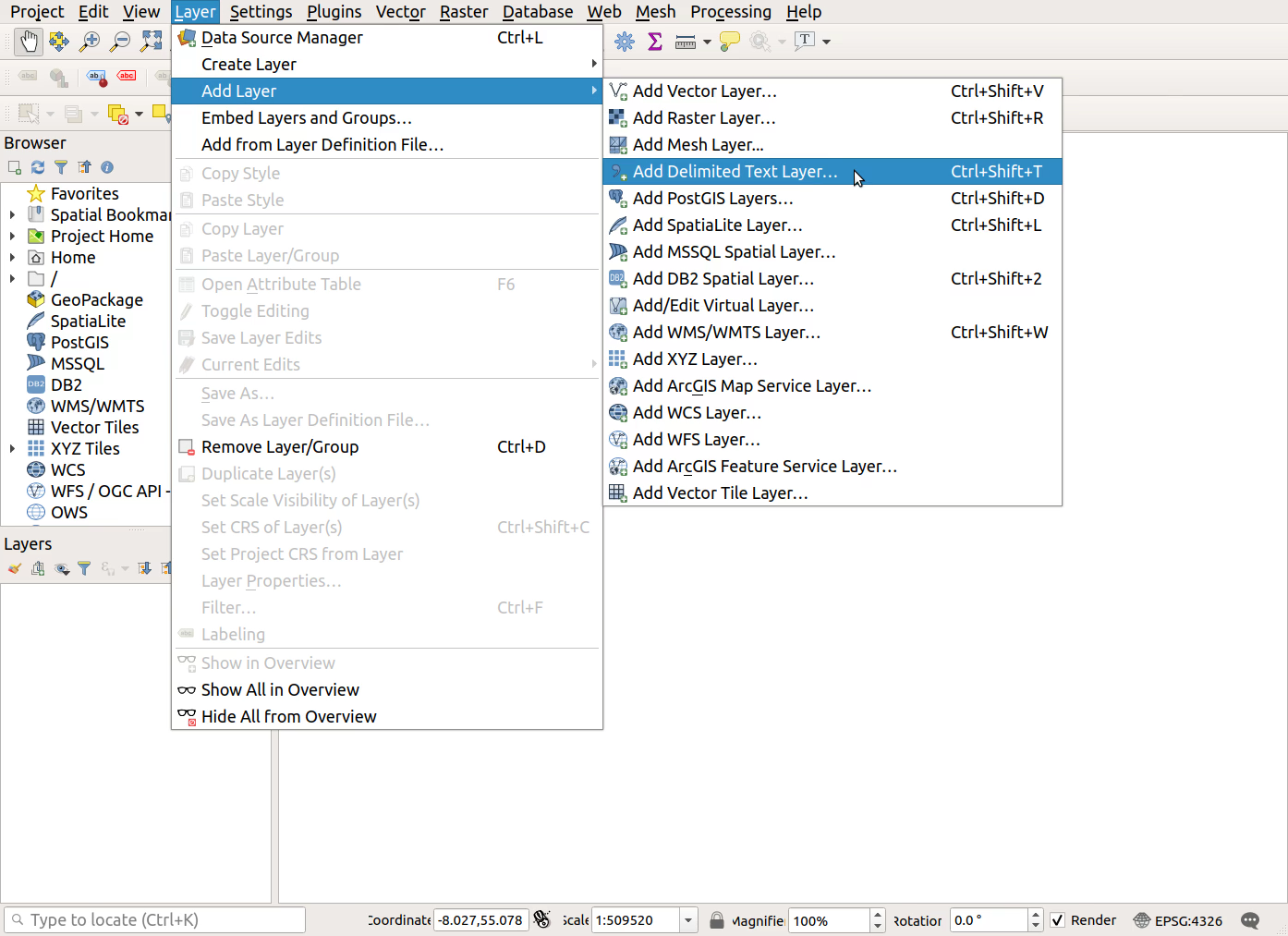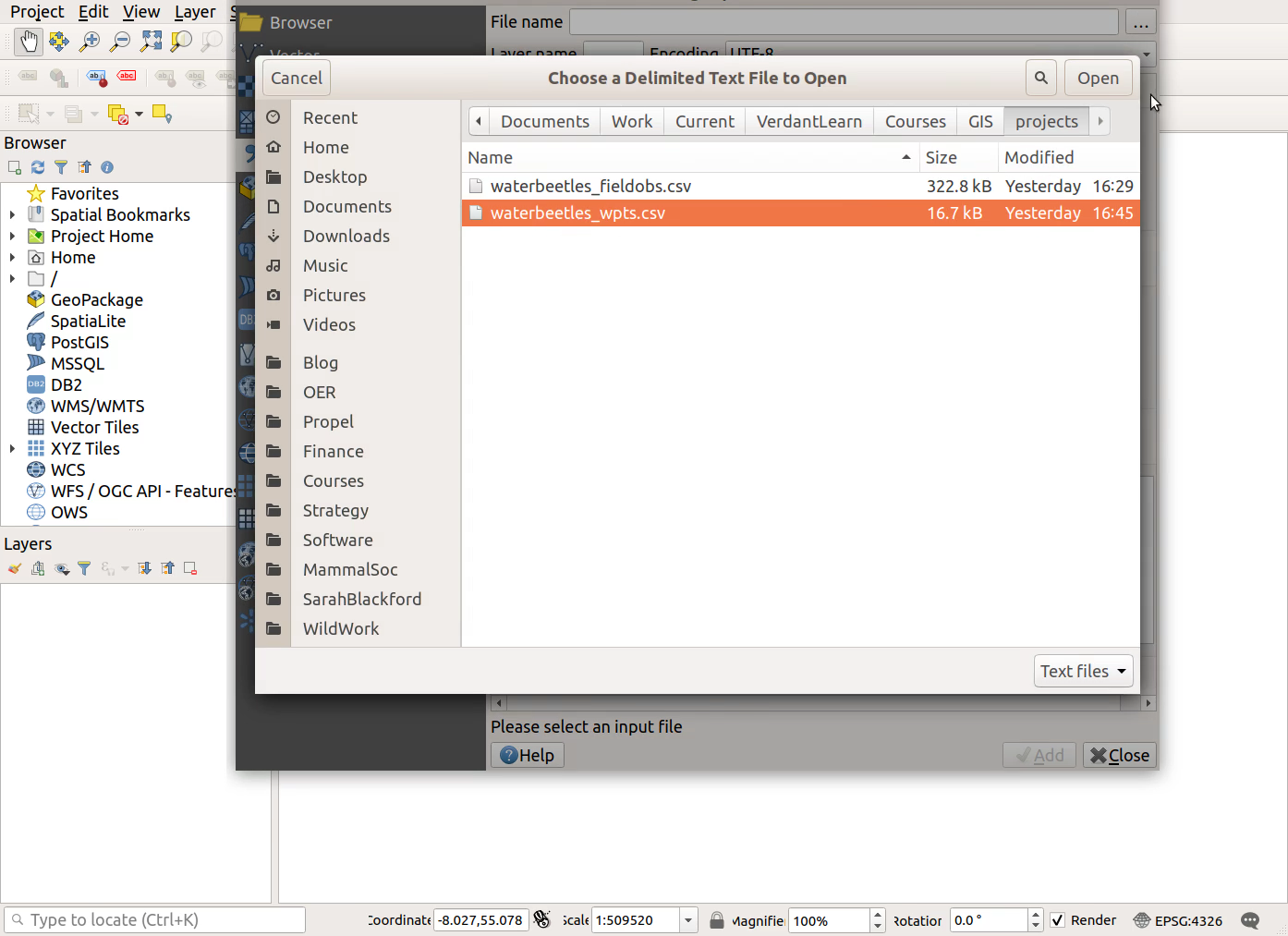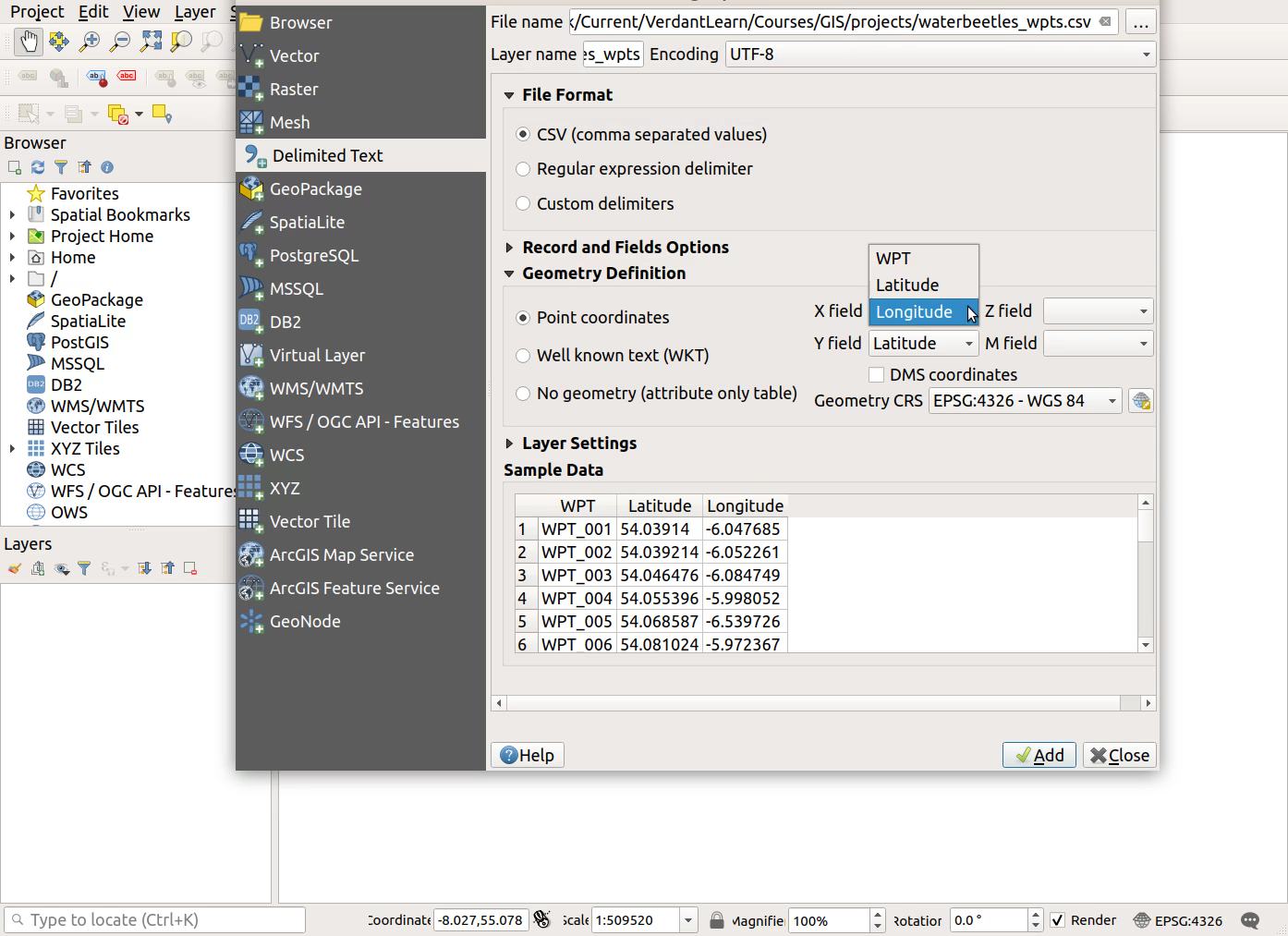Import spatial data from a spreadsheet
Let’s work with an example of Latitude-Longitude coordinates, to learn how to import spatial data from a spreadsheet
The Che Tao NR staff have provided us with a new dataset from their most recent patrol, looking for evidence of threats to wildlife
.csv file format
Threats_Evidence.csv is in .csv format, or comma-delimited, with columns separated by a comma. .csv is a non-spatial file format, although as you’ll see, it does contain spatial information
To add this new layer to your GIS project, you’ll need to use a new method. QGIS won’t automatically know where to draw data in .csv format, so we have to tell it where the location coordinates are stored. Before we do that, let’s take a look at the raw data
- Download Threats_Evidence.csv
- Open up the .csv file in Excel (or a text editor if you prefer)
- Examine the columns:
- Does the information you’ve been given make sense?
- What type of vector data do we have - points, lines or polygons?
- Do you understand what the numbers in the coordinate columns mean?
Add .csv data to QGIS
For those of you who are more confident with the basics of using QGIS, here are the steps without screenshots:
Layer > Add Layer > Add Delimited Text Layer...- Choose source file - click the
...button and find Threats_Evidence.csv- Ensure
Point coordinatesis selected underGeometry Definition- QGIS should automatically recognise which columns contain the X (Longitude) and Y (Latitude) coordinates
- Click
AddandClose
For those of you who want more detail or visual instructions, here are the steps including screenshots:
![]() Be aware that the csv file in these screenshots is different from yours
Be aware that the csv file in these screenshots is different from yours
Layer > Add Layer > Add Delimited Text Layer...

- Choose source file - click the
...button

- Ensure
Point coordinatesis selected underGeometry Definition, and specify which columns contain the X and Y coordinates

- Click
AddandClose